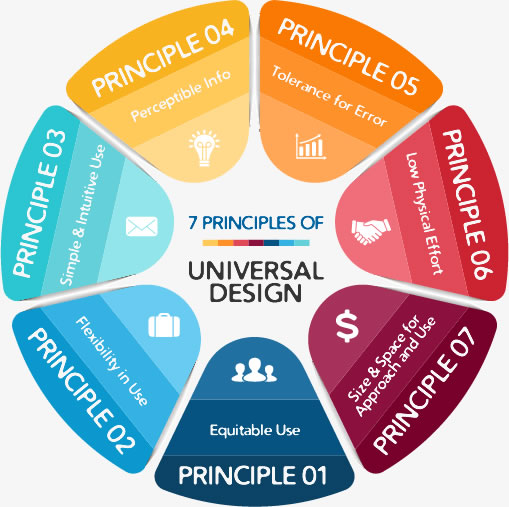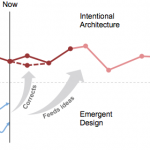The Seven Principles of Universal Design

7 PRINCIPLES OF UNIVERSAL DESIGN
The 7 Principles of Universal Design were developed in 1997 by a working group of architects, product designers, engineers and environmental design researchers, led by the late Ronald Mace in the North Carolina State University.
The purpose of the Principles is to guide the design of environments, products and communications. According to the Center for Universal Design in NCSU, the Principles “may be applied to evaluate existing designs, guide the design process and educate both designers and consumers about the characteristics of more usable products and environments.”
- Principle 1: Equitable Use
The design is useful and marketable to people with diverse abilities. - Principle 2 : Flexibility in Use
The design accommodates a wide range of individual preferences and abilities. - Principle 3: Simple and Intuitive Use
Use of the design is easy to understand, regardless of the user’s experience, knowledge, language skills, or current concentration level. - Principle 4: Perceptible Information
The design communicates necessary information effectively to the user, regardless of ambient conditions or the user’s sensory abilities. - Principle 5: Tolerance for Error
The design minimizes hazards and the adverse consequences of accidental or unintended actions. - Principle 6: Low Physical Effort
The design can be used efficiently and comfortably and with a minimum of fatigue. - Principle 7: Size and Space for Approach and Use
Appropriate size and space is provided for approach, reach, manipulation, and use regardless of user’s body size, posture, or mobility.
The Process of Embedding Choice for All People in the Things We Design
Universal Design continues to evolve as both designers and users broaden their understanding and experience of different users’ needs, abilities, and desires. The more you know about Universal Design, the more you realize that there will always be more to learn.
Universal Design is defined as the process of embedding choice for all people in the things human beings design.
- Universal Design is an ongoing design process rather than a final type of product, space or system.
- Choice is provided by things that are designed to be flexible, adaptable, and provide alternative means of use and multiple interfaces.
- All People includes the full range of human diversity, regardless of age, ability, sex, economic status, etc.
- Things include spaces, products, information systems and any other things that humans can design, manipulate or create.








No Comments on this Post.Be the first